
[This article was first published by Equal Times on 31 August 2016 and has been updated.]
With the doubling of the world’s population since 1960 and changes in eating habits, the quantity of seafood caught for human consumption has increased dramatically to reach over 171 million tonnes in 2017. Between 2012 and 2017, it increased by 14 million tonnes, the equivalent of 5000 kilos a second. Sixty per cent of this catch is wild fish.
According to the United Nations’ Food and Agriculture Organization (FAO), Europeans currently consume an average of 27 kilos of seafood per year, including 21.7 kilos of fish, with strong disparities between countries.
Huge factory trawlers plough the various fisheries, depending on the product sought, to supply major distribution outlets. This large-scale commercial fishing, also known as industrial fishing, is heavily subsidised by public funds.
Industrial fishing operations receive an average of 187 times more diesel fuel subsidies per year than small-scale fishers, despite generating less employment – with 200 industrial fishers for every 1000 tonnes of fish as compared with 2400 small-scale fishers for the same volume. Moreover, industrial fishing is much more devastating in terms of discards.
The industrial trawlers of today are out-and-out floating factories where the work is wholly designed and organised around production line methods. The seafarers remain at their workplace for 27 days. During this time, their lives, eating and sleep patterns depend on the work to be done.
The north-east Atlantic is the world’s fourth largest fishery. Mainly exploited by European ship owners, this area accounts for over 70 per cent of EU catches. In 216, the photojournalist Pierre Vanneste spent two 15-day stretches at sea with industrial fishermen, to report on the day-to-day reality of life on board.
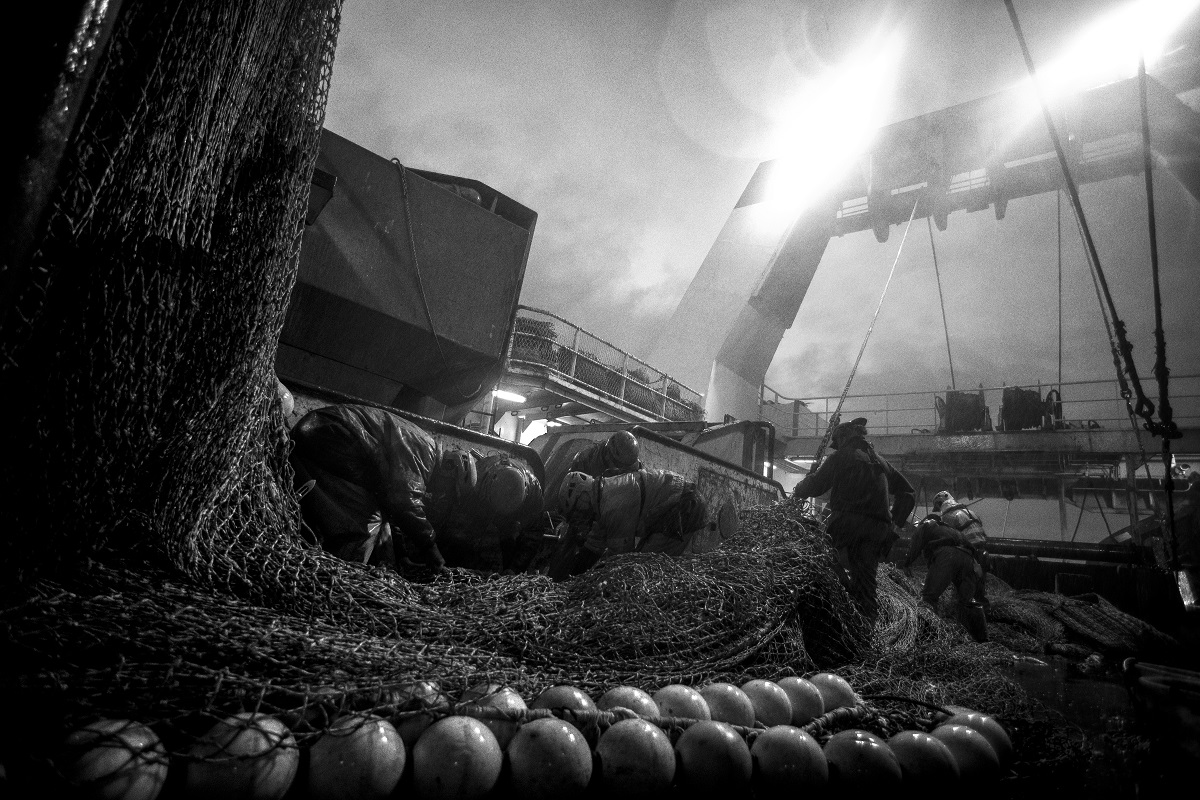
Most of the boats fishing in the north-east Atlantic are big trawlers.. They are equipped with production lines for sorting and gutting the fish, as well as a refrigerated holds with a storage capacity of up to 1000 tonnes.
Most of the boats fishing in the north-east Atlantic are big trawlers – Norwegian, Icelandic, Russian, Danish, British, Spanish and French – ranging between 30 and 48 metres long. They are equipped with production lines for sorting and gutting the fish, as well as a refrigerated holds with a storage capacity of up to 1000 tonnes.
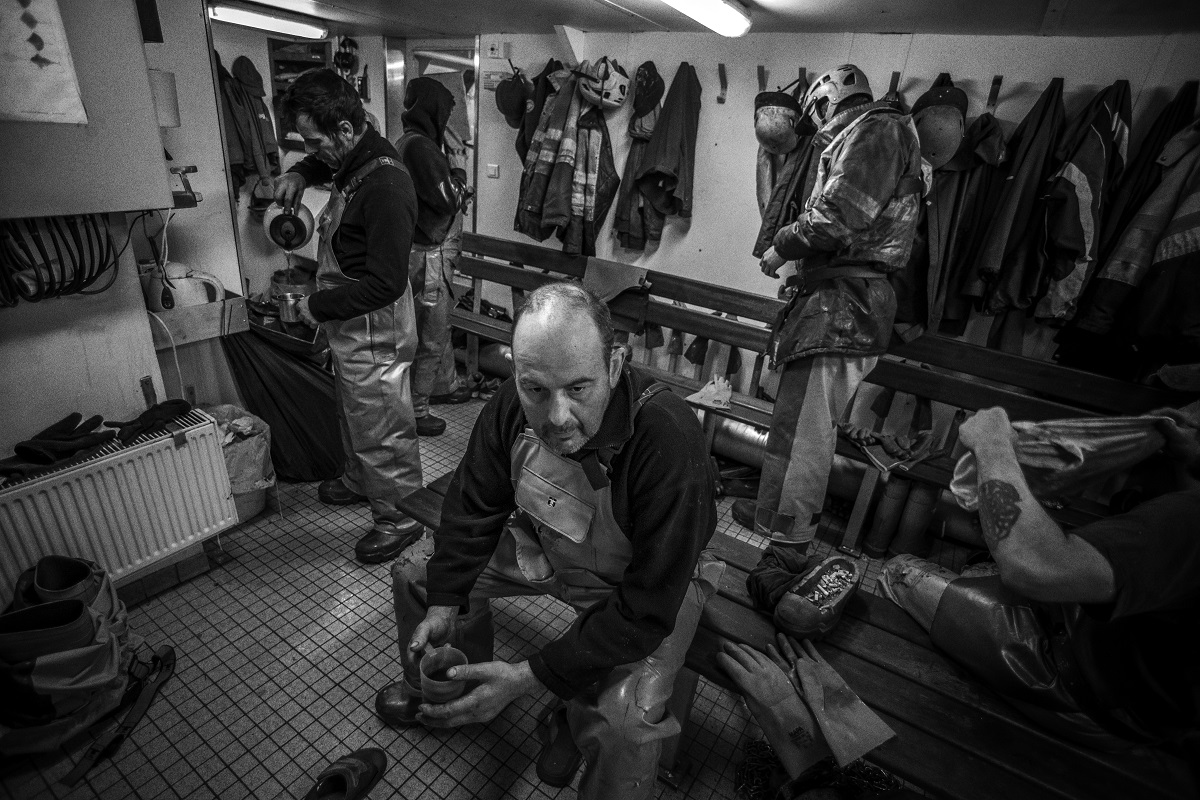
“As soon as we’re on board and have reached the fishing ground, the work never stops until the holds are full,” says François, a former seafarer on this industrial fishing boat.
On board, the seafarers live at the pace of the machines and the hauls, catching a few hours’ sleep between a meal and the sorting work in the factory. When the alarm sounds to signal that the trawl net is full, everyone gets up and hurries to the changing room, gulping down a cup of coffee before going out on deck.
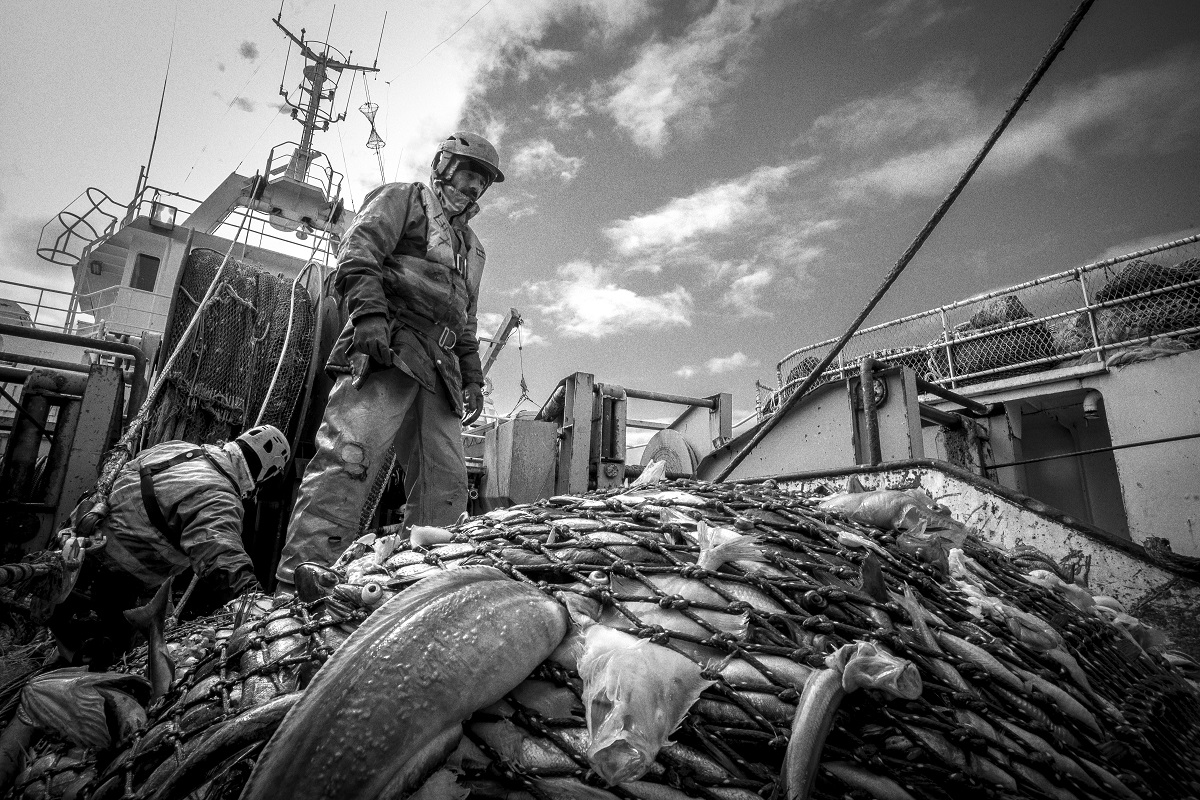
On the largest trawlers, a full trawl net holds approximately 12 tonnes of fish. Once hauled on board, it is emptied into a trap door located on deck and sent to the factory on the lower deck. Each trawl contains a large bycatch.
Nearly a third of a catch is thrown back into the sea. Protected or regulated species (such as certain species of ray and shark) unintentionally caught in the nets do not escape this equation, and are usually dead by the time they are returned to their natural environment.
In 2015, the European Union introduced a regulation establishing a discard plan, aimed at progressively eliminating discards by obliging ships to land bycatches. They are sold at a low price and are used to make fishmeal for animal and fish farming. Although bycatches now have to be included within the quotas, some argue that the regulation does not solve the problem of species substitution in the marine environment and only serves to boost a market geared towards ever-growing production, without any real resource management plan.
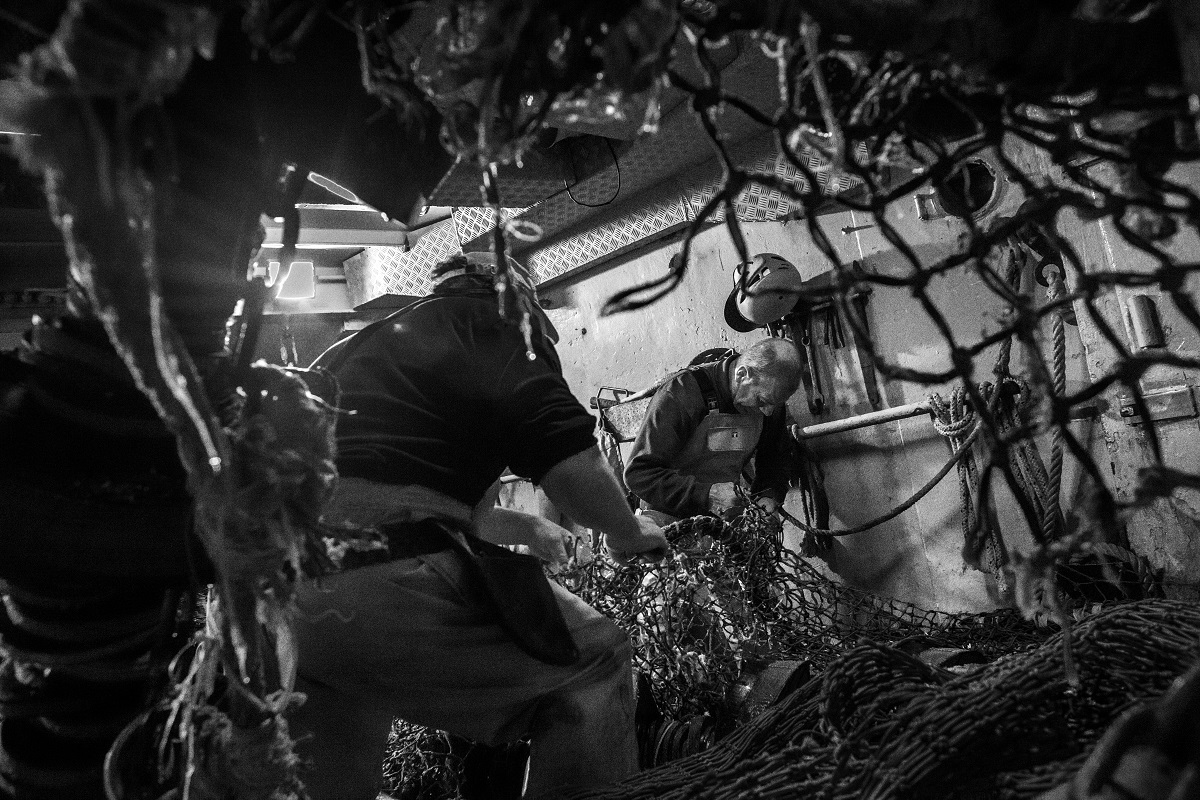
When the trawl is hauled on board, the net is sometimes ripped, having been caught by rocks on the seabed or simply due to wear and tear. The 70-metre net is replaced with a spare and laid out for repair on the deck.
If the tear is very big, the repair work, added to the factory work, can take several hours, stretching to over 24 hours in some instances. Between mending the nets, the work in the factory and hauling in the catch, the seamen are left without a minute’s rest.
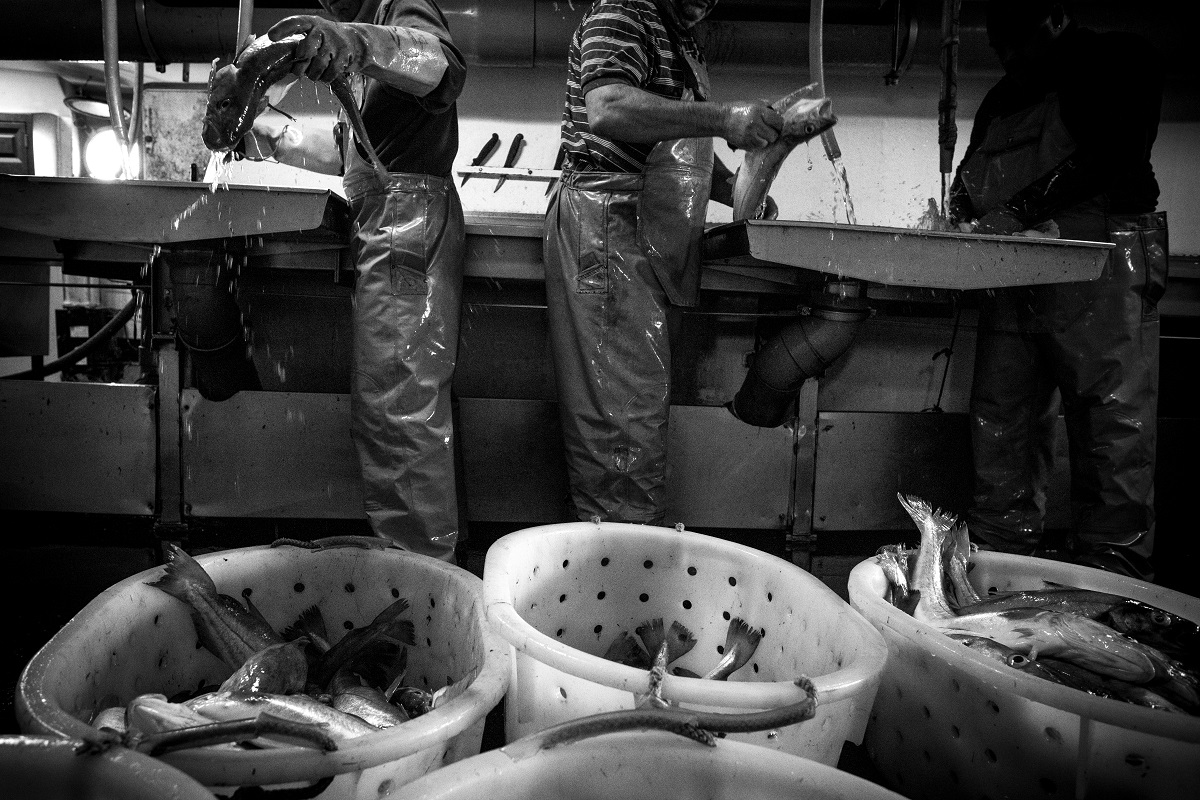
The most tiresome and most time-consuming job on board is the monotonous task of sorting the fish. The workers sort the fish in the factory on the lower deck, removing any that are too small, defective or not fit for sale, before gutting.
“You have to able to cope with the factory work. When you’ve been gutting fish for over four hours, there comes a point when you’re totally out of it. You’re just waiting for the time to come when you can go and have a rest, take a shower… But when you’ve finished sorting and you barely have time for a quick coffee before the alarm goes off again, then, yes, it’s tough. It’s really tough,” says François.
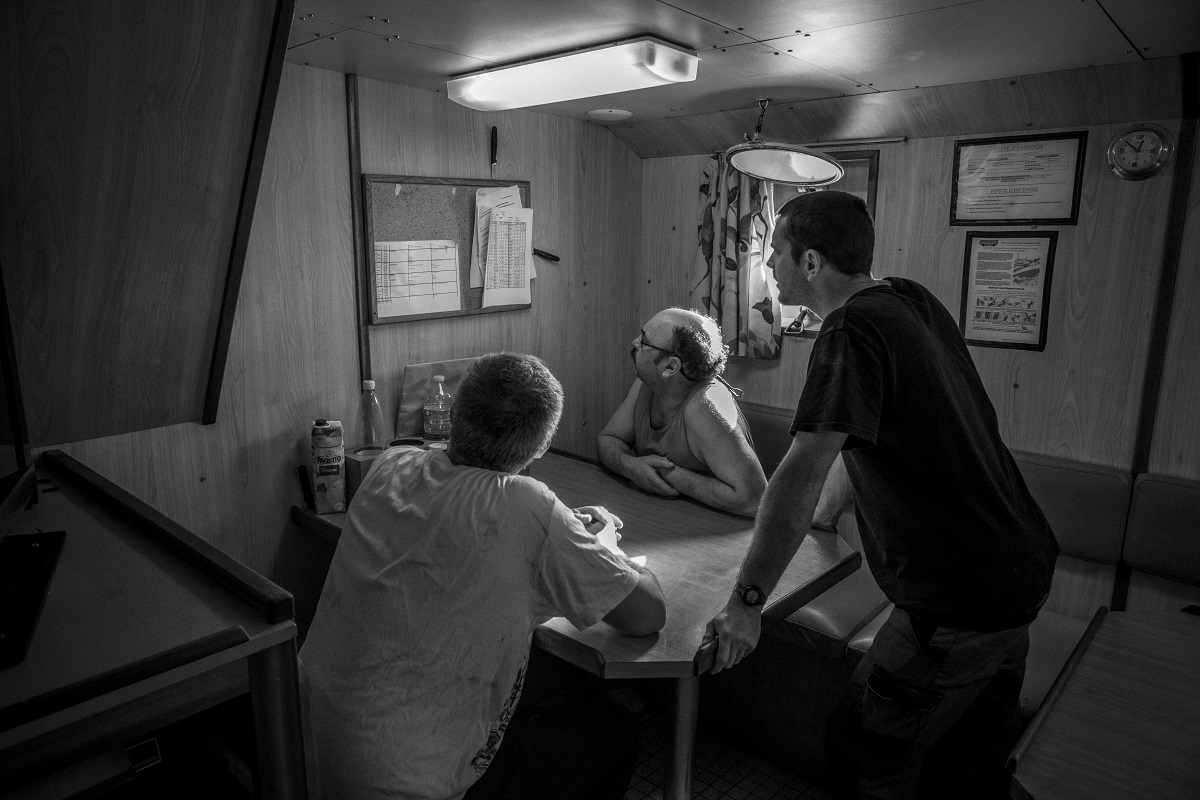
Whilst at sea, the crew receives a fax detailing the sales from the previous outing, which are posted in the wardroom - the canteen and living quarters.
Whilst at sea, the crew receives a fax detailing the sales from the previous outing, which are posted in the wardroom - the canteen and living quarters. They consult the list of sale prices and calculate their share of the catch, based on the percentage corresponding to their rank on the ship. This is added to their wage, as an incentive designed to help them keep going despite the difficulties of the job and the length of the stints at sea.
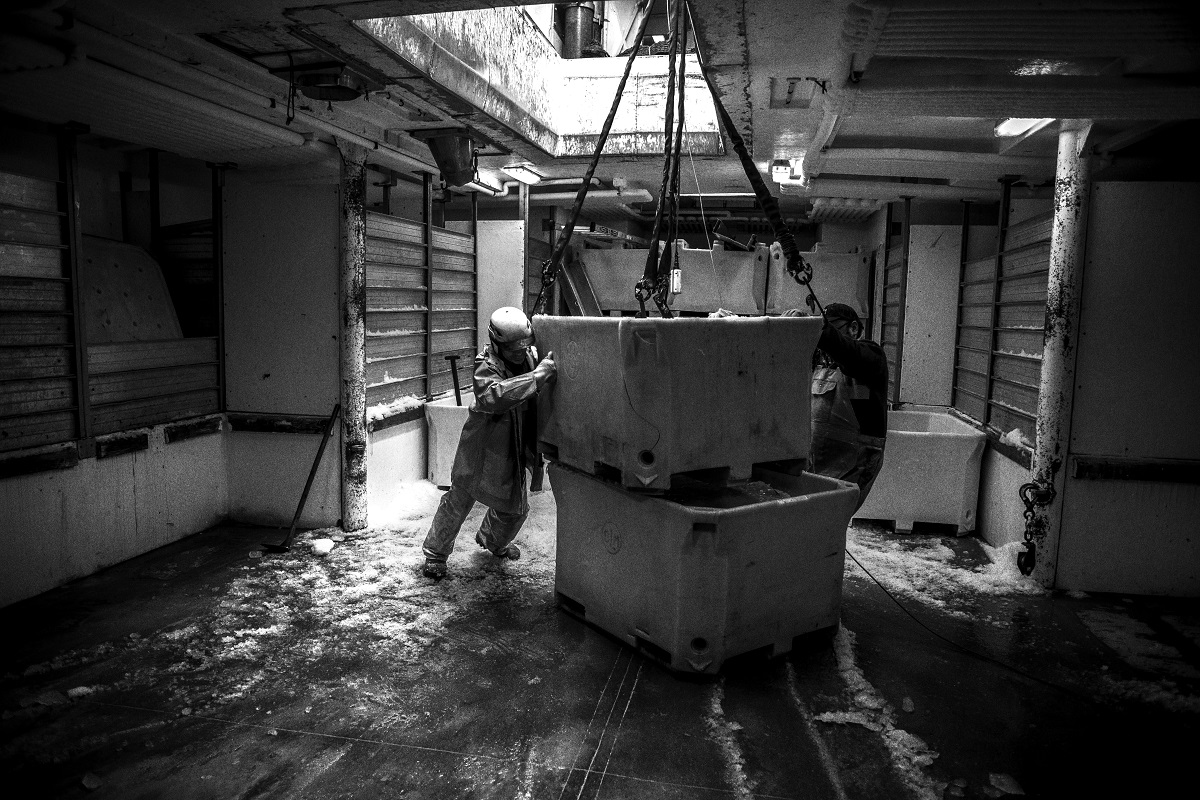
Every ten days or so, the fish is transported back to land to be sold. Part of the crew changes over before the boat heads off again to trawl the seas and fill its holds.
François concludes: “Nowadays, the real problem is that we are still as reckless as in the 1970s and 1980s, where it’s all about ever-bigger profits and we absolutely have to fill the holds to the brim. It’s obvious that if it carries on like this, we’re going to be in trouble. People need to be made conscious and something has to be done. But anyway, there are too many stakes involved for everyone.”










